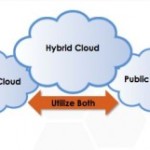SaaS has the potential to transform the way information technology departments relate to and even think about their role as providers of computing services to the rest of the enterprise. The emergence of SaaS as an effective software-delivery mechanism creates an opportunity for IT departments to change their focus from deploying and supporting applications to managing the services that those applications provide. A successful service-centric IT, in turn, directly produces more value for the business by providing services that draw from both internal and external sources and align closely with business goals.
How SaaS Affects IT
After you’ve made the decision to pursue SaaS, the next step is to prepare for the transition by assessing how the deployment will affect your existing IT assets, and by taking steps to ensure that the transition can be handled smoothly.
Performing due diligence is a routine part of any successful IT infrastructure deployment project, so the basics should already be familiar to you. Some factors, however, deserve special consideration. Some areas to address in your due-diligence checklist include:
- Data-security standards. Moving critical business data “outside the walls” introduces a risk of data loss or inadvertent exposure of sensitive information. Assess your data-security needs, and ensure that the provider has measures in place to meet the standards you set.
- SLA guarantees. The management contract between you and the SaaS provider takes the form of service-level agreements (SLAs) that guarantee the level of performance, availability, and security that the SaaS vendor will provide, and govern the actions the provider will take—or the compensation it will provide—in the event that it fails to meet these guarantees. Ensure that these SLAs are in place, that the guarantees they make are sufficient to meet your needs, and that they provide a sufficient level of mitigation in even the worst-case scenario.
- Migration strategies. At some point, you might want to migrate away from a SaaS application to another solution, so it’s important that you are able to take your existing data out of the application and move it to another one. Ask your prospective SaaS provider about any data-migration strategies and procedures it uses, including any provisions for data and code escrow. (See “Integration Architecture,” later in the article, for additional advice on preparing data for migration.)
- In-house integration requirements. Ensure that migrating to SaaS will meet any functional and data-integration requirements your organization has in place. We’ll discuss integration scenarios in greater detail, later in this article.
- Reporting services. Because SaaS involves giving up direct control of some of your data, accurate and useful reporting is especially important. Determine what reporting services the provider offers, and whether they are compatible with your business-intelligence requirements.







